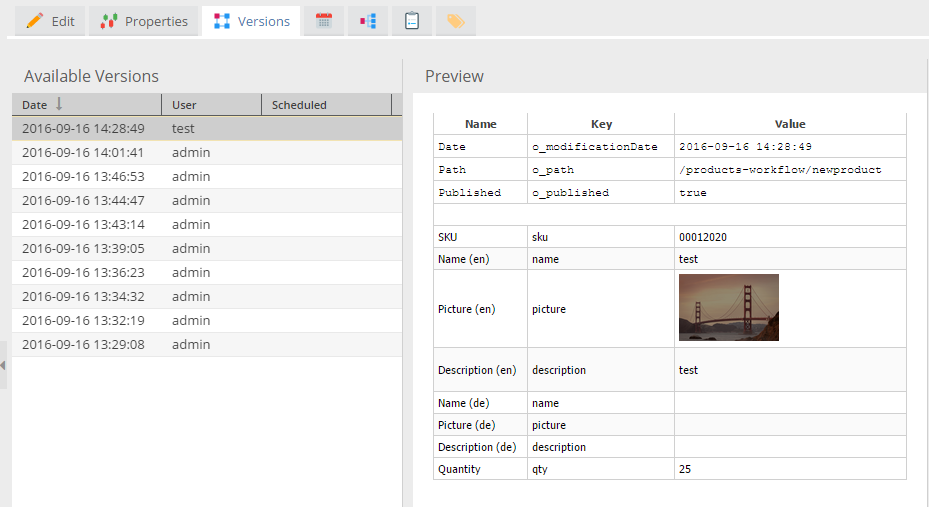Versioning
General
All contents in Pimcore (documents, assets and objects) are versioned. You can have as many versions as you want. On each change a new version of the element is created.
For example, if you would like to find the version history in objects you have to choose Versions tab.
There you can see a list of changes, what is the difference between revisions and you can choose which version should be published.

Settings
You can configure the versioning behavior in the ![]() Settings -> System Settings -> (Documents, Assets, Objects)
Settings -> System Settings -> (Documents, Assets, Objects)

Turn off Versioning for the Current Process
Sometimes it is very useful to just deactivate versioning for a process. For example for importers or synchronization with 3rd party systems. You can globally deactivate and activate the versioning with the following PHP code directly in your scripts:
\Pimcore\Model\Version::disable(); // to disable versioning for the current process
\Pimcore\Model\Version::enable(); // to enable versioning for the current process
Note: With these commands you only deactivate/activate the versioning for the current PHP process. This setting is not saved, and only affects changes on elements which are modified within this process!
Working with PHP API
When working with PHP API - especially when saving elements - you need to set the userModification so that a proper
user is shown in version history.
When you set userModification to 0 Pimcore shows system as user in the version history.
$object->setUserModification(0);
$object->save();
Example: How to get a previous version of an object
$versions = $currentObject->getVersions();
$previousVersion = $versions[count($versions)-2];
$previousObject = $previousVersion->getData();
Simple::log("example", "previous value: ".$previousVersion->getData()->getSomeValue());
Simple::log("example", "current value ".$currentObject->getSomeValue());